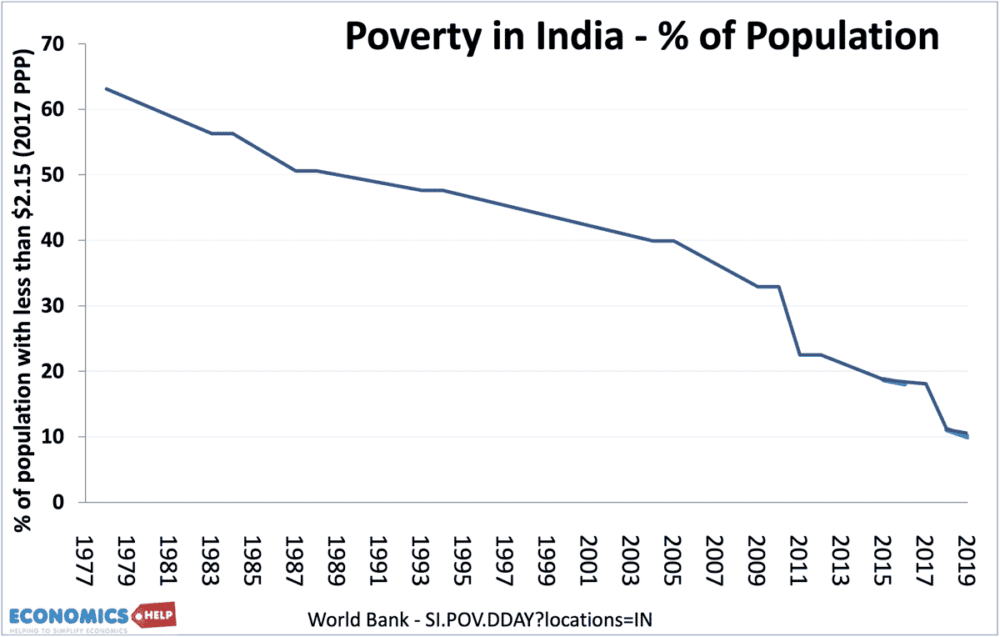Discuss the key strengths of the Indian economy that have contributed to its growth trajectory. How can these strengths be leveraged to accelerate progress towards a $5 trillion economy?
இந்தியப் பொருளாதாரத்தின் முக்கிய பலத்தைப் பற்றி விவாதிக்கவும். 5 டிரில்லியன் டாலர் பொருளாதாரத்தை நோக்கி முன்னேற்றத்தை விரைவுபடுத்த இந்த பலங்களை எவ்வாறு பயன்படுத்த முடியும்?
SBI estimates that India will be the third largest economy by 2029
Despite several problems facing the Indian economy, many economists point to potential strengths of the Indian economy which could enable it to continue to benefit from high levels of economic growth in the future.
- The demographics of India are favourable. India still has a positive birth rate meaning that the size of the workforce will continue to grow for the foreseeable future. (unlike China) A rising workforce helps to increase savings and investment. It also enables increased productivity.
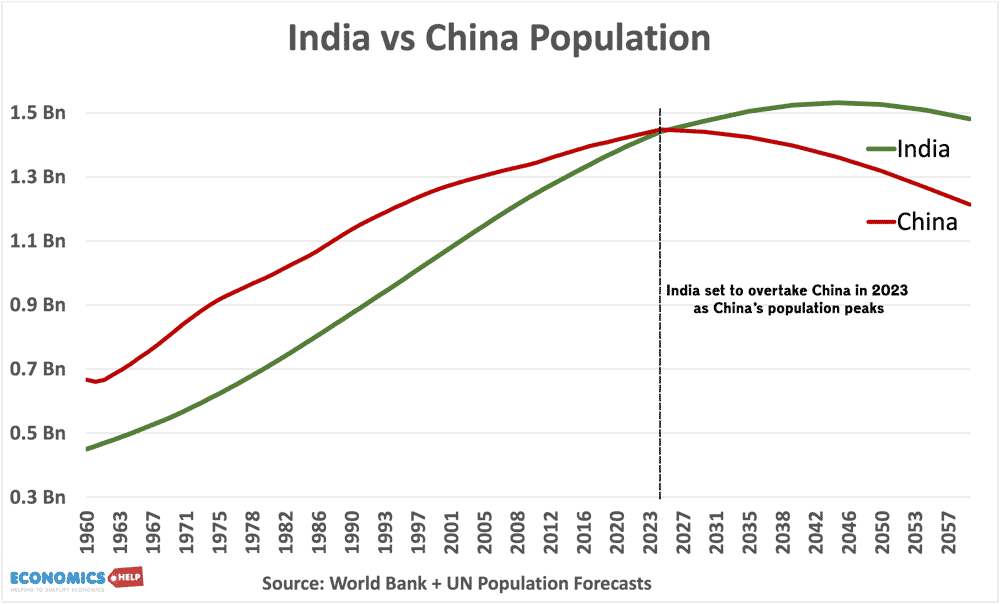
- There is much scope for increases in efficiency. The infrastructure of India is so bad in places that even moderate improvements could lead to significant improvements in the productive capacity of the economy.
- India is well placed to benefit from globalisation and outsourcing. A legacy of the British Empire is that India has one of the largest English-speaking populations in the world. For labour-intensive industries like call centres, India is an obvious target for outsourcing. This is an economic development likely to continue in the future.
- Education. India has a relatively high level of literacy for average GDP per capita levels. The right to elementary education (from the 2002 act) has helped literacy rise from 52.2% in 1991 to 74.04% in 2011
- Positive Growth forecasts A recent study from the Economist state India could be the fastest growing economy in the world – with its growing labour force and potential to ‘catch-up’ other emerging economies.
- Comparative advantage in labour-intensive industries. India will also benefit from the liberalisation of free trade in recent years.
- Largest car producer. India is one of the world’s leading producers of small cars/mopeds. In 2013/14, India produced 21.48 million vehicles (mostly two and three-wheelers) making it one of the biggest car producers in the world – focusing on a successful niche of cheap motorbikes for the Asian market.
- Growth in new companies. India has become a hub for IT start-ups, with the third highest level of business start-ups in 2014–15
- Attracting more FDI. Despite rigid regulations in planning and start-ups, India has attracted $36.5 billion of FDI in 2011, a significant increase on previous years and a sign multinational companies are increasingly valuing India’s growing economy and consumer class. This FDI is important for financing India’s current account deficit.
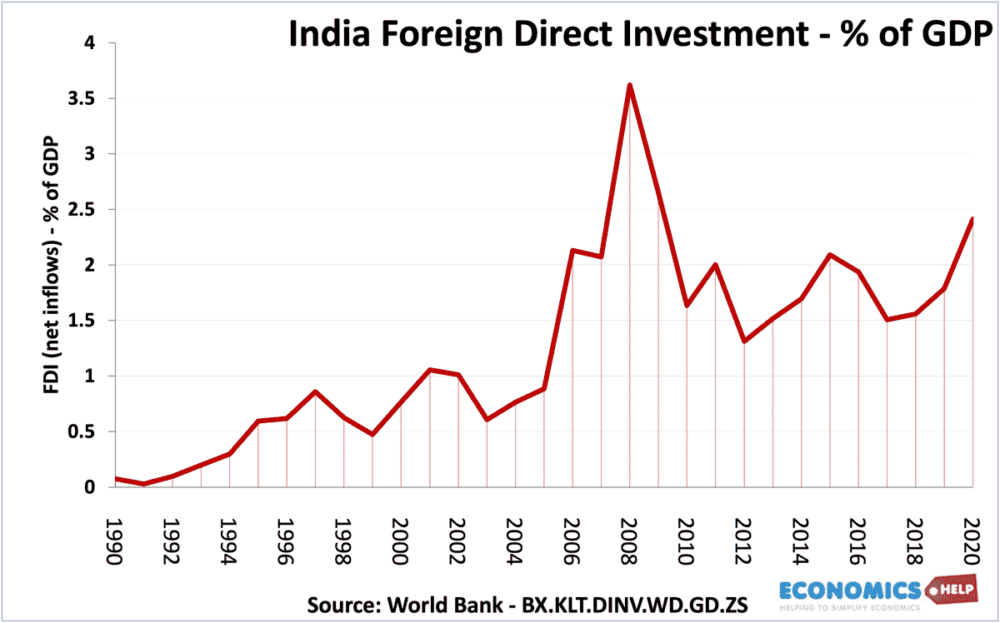
- Remittances. India has an important segment of its workforce working overseas (e.g. Middle-East). Foreign remittances to India amounted to US$68.91 billion in 2015 – 3.5% of India’s GDP.
- Growth in trade Indian exports have grown from
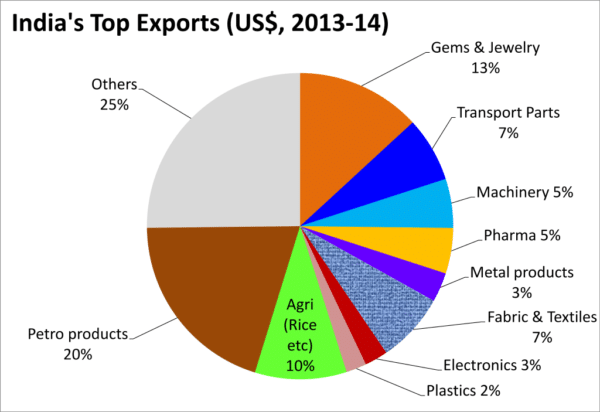
M Tracy Hunter – 2014 CC SA 4.0 Foreign trade accounted for 48.8% of India’s GDP in 2015.
- Tourism. Tourism is a growth market for India, attracting foreign currency and creating employment. The tourism sector is forecast to grow by annual rate of 7.5% by 2025 (accounting for 7.2% of GDP)
- Diversification of Indian economy
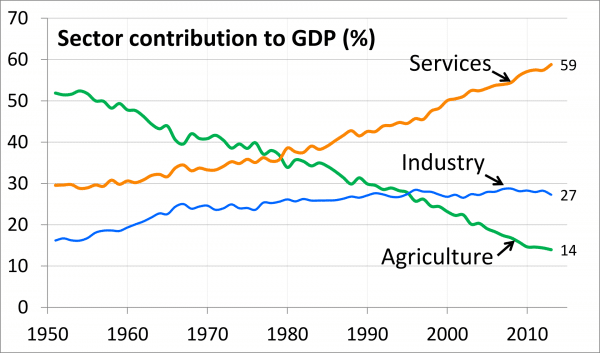
Less dependent on agriculture. Service sector offers a chance for higher economic growth.
7. Healthy savings
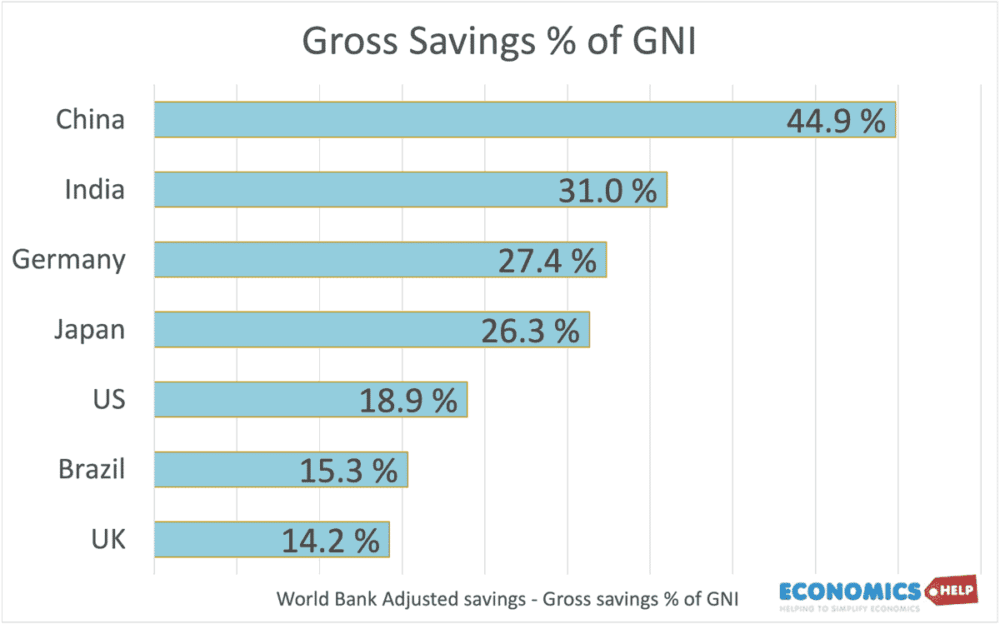
This will enable India to copy high growth model of Asian counterparts.
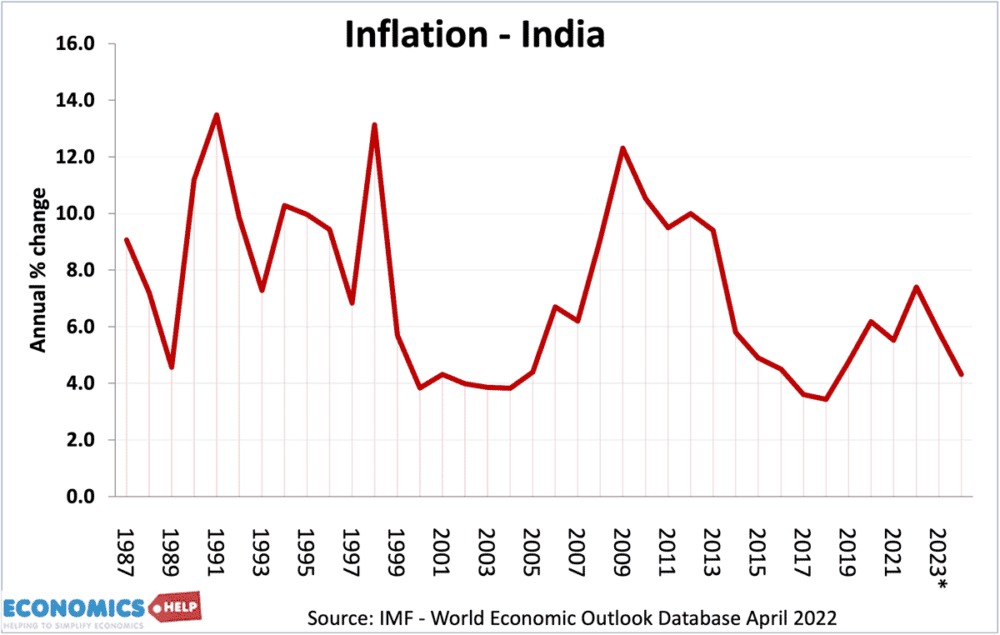
Despite the 2022 setback (due to higher oil prices), there are better signs for Indian inflation in recent years.
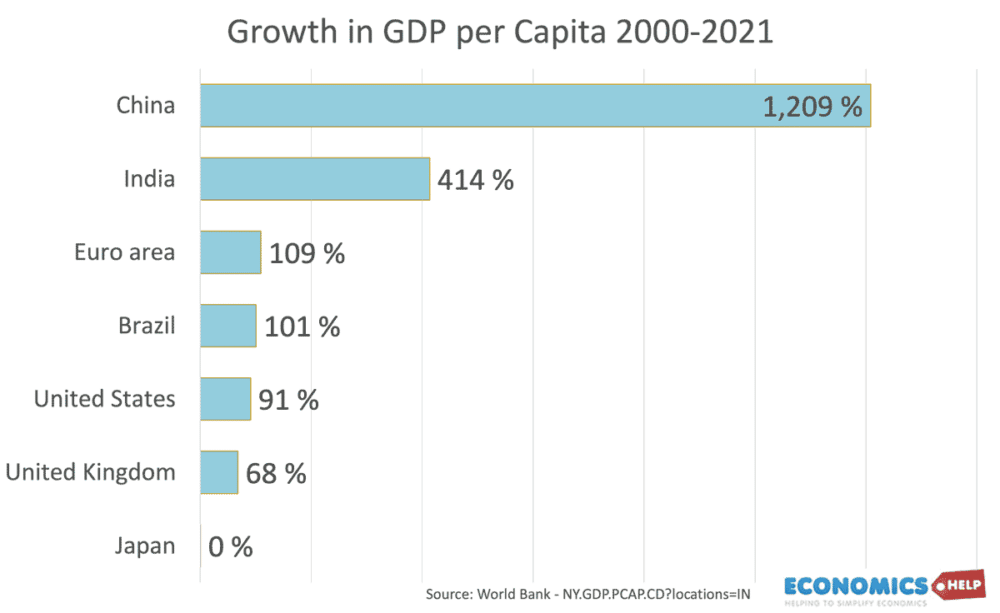
India vs China
India has a strong digital advantage with its 900 million working-age population having affordable internet access at $2.5/month and 650 million smartphones, all running on the India Digital Stack. This has led to deeper inclusion and new demand for financial services, consumer goods, healthcare, and education. The unbanked population has reduced to under 20%, per capita data consumption is among the highest in the world at 17 GB and e-commerce is already at 7%.
India has an unparalleled base of technology skills. Technology services exports crossed $150 billion in FY22 and continue to be relevant in an ever-digitising world. There are 1,500 global capability centres in India, set up by many of the Fortune 500. With 5 million employees, the sector accounts for 40% of the global technology workforce. IT exports essentially pays for India’s oil import bill.

With one of the fastest growing innovation ecosystems of the world, India has jumped 41 places on the Global Innovation Index to 40th in just 7 years. India’s demographic and digital dividend is a key factor in this progress with a large, aspiring, digitally connected population and a growing number of young risk-taking entrepreneurs. India ranks 3rd in the world for number of start-ups and unicorns.

2. Transformative public infrastructure investment

India has among the best metro airports in the world and is the third largest air traffic market having grown at a CAGR of 17% pre-Covid. Investments in airport infrastructure are providing deeper access to remote areas. Similar investments in ports, railways and highways are creating a world-class transportation network that will enable the creation of an efficient and integrated ecosystem for manufacturing, logistics and exports. The government of India has set a plan to increase port handling capacity by 4x to 10,000 MMTPA by 2047.
3. Unique opportunities and incentives for the development of a dominant manufacturing base
The Indian government is working to increase the manufacturing sector’s share of GDP from the current 15% by introducing multiple programs, such as the phased manufacturing program and the production linked incentive scheme and by reducing and simplifying tax regimes. They plan to achieve $600 billion of manufacturing exports by FY26, increase India’s export share from 2% to 10% by 2047 and promote 100 Indian brands as global champions. The biggest success so far in the PLI scheme has been in mobile phone manufacturing, where exports have increased from $0.1 billion in FY17 to ~$9 billion this year.

One of the tailwinds is the diversification of global supply chains away from China, where the median age is 38 and the labour supply continues to get tighter. India’s demographic dividend can step in to fill the gap.
4. Initiatives to reduce external energy dependence

India is working to achieve energy independence by 2047 and reduce the $100 billion spent annually on energy imports by increasing investments in renewable energy and green hydrogen. The government has set a goal of 500 GW of renewable capacity by 2030, requiring $300 billion in investments. India is making progress, such as achieving 83% electrification in railways and aiming to reach 100% by 2024.
India has a stable political climate which has led to consistency and predictability in policies in the last decade promoting efficiency and agility in doing business. GST, for example, has made tax compliances easier by automating them and reducing the need for multiple returns. Similarly, the Jan Dhan Yojana has resulted in $40 billion savings through direct transfer of subsidies to bank accounts.

